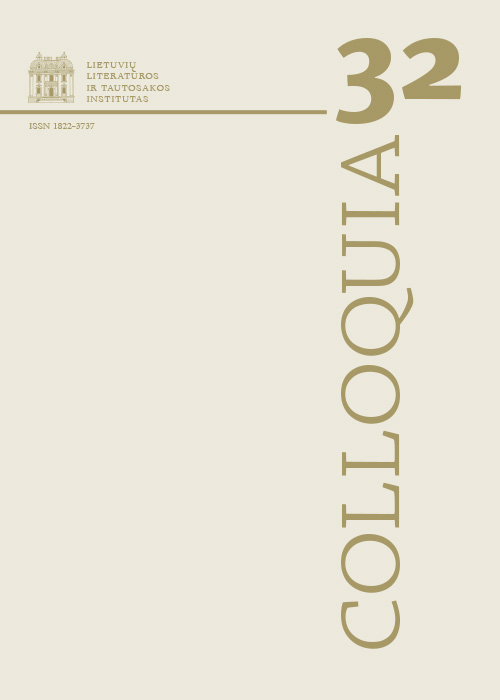Visgi, kas yra Ričardo Gavelio Vilniaus džiazo pasakotojas?
Santrauka
Straipsnyje nagrinėjamas trečiasis, 1993 m. pasirodęs, Ričardo Gavelio romanas Vilniaus džiazas. Analizės centre – romano pasakotojas, jo raiška ir egzistavimas tekste. Parafrazuojant Josepho Hillis Millerio klausimą „visgi, kas yra [Virginios Woolf] Į švyturį pasakotojas?“, aprašomos ir analizuojamos Vilniaus džiazo pasakotojo trajektorijos, konstatuojant, kad pasakotojas yra sudėtingiausias ir labiausiai identifikacijoms nepasiduodantis struktūrinis romano elementas. Mėginant nustatyti Vilniaus džiazo pasakotojo tapatybės daugiasluoksniškumą, pasitelkiama ne tik Hillis Millerio išskirta kategorija „pasakotojas yra kolektyvinė sąmonė“, bet ir sugrįžtama prie Gavelio kūrybai reikšmingos ir būdingos vidinių gyventojų teorijos, siekiant ištirti, ar ji tebefunkcionuoja taip pat, kaip apysakoje Galbūt (1982), ar yra patyrusi transformacijų. Daroma išvada, kad Vilniaus džiaze vidinių gyventojų teorija veikia kiek kitomis sąlygomis nei ankstesniuose kūriniuose, taip įgaudama naujų prasmių ir raiškos tekste galimybių. Romane vaizduojamoms veikėjų sąmonių sąjungoms permanyti pasitelkiama Hillis Millerio „kilimo rašto“ metafora, kuri tampa svarbiu nepatikimo pasakotojo atpažinimo įrankiu, paliudijančiu šio romano pasakotojo ir veikėjų dekonstruktyvumą bei daugialypio teksto „Aš“ egzistavimą.
Atsisiuntimai
Skaitomiausi šio autoriaus(ų) straipsniai
- Jūratė Čerškutė, Aušra Jurgutienė, Pasakojimais mes ne tik konstruojame, bet ir dekonstruojame savo gyvenimus , Colloquia: T 54 (2024): Colloquia
- Aistė Kučinskienė, Jūratė Sprindytė, Virginija Cibarauskė, Jūratė Čerškutė, Rima Bertašavičiūtė, Apie doktorantūros studijas, laisvalaikį ir akademines erdves , Colloquia: T 33 (2014)
